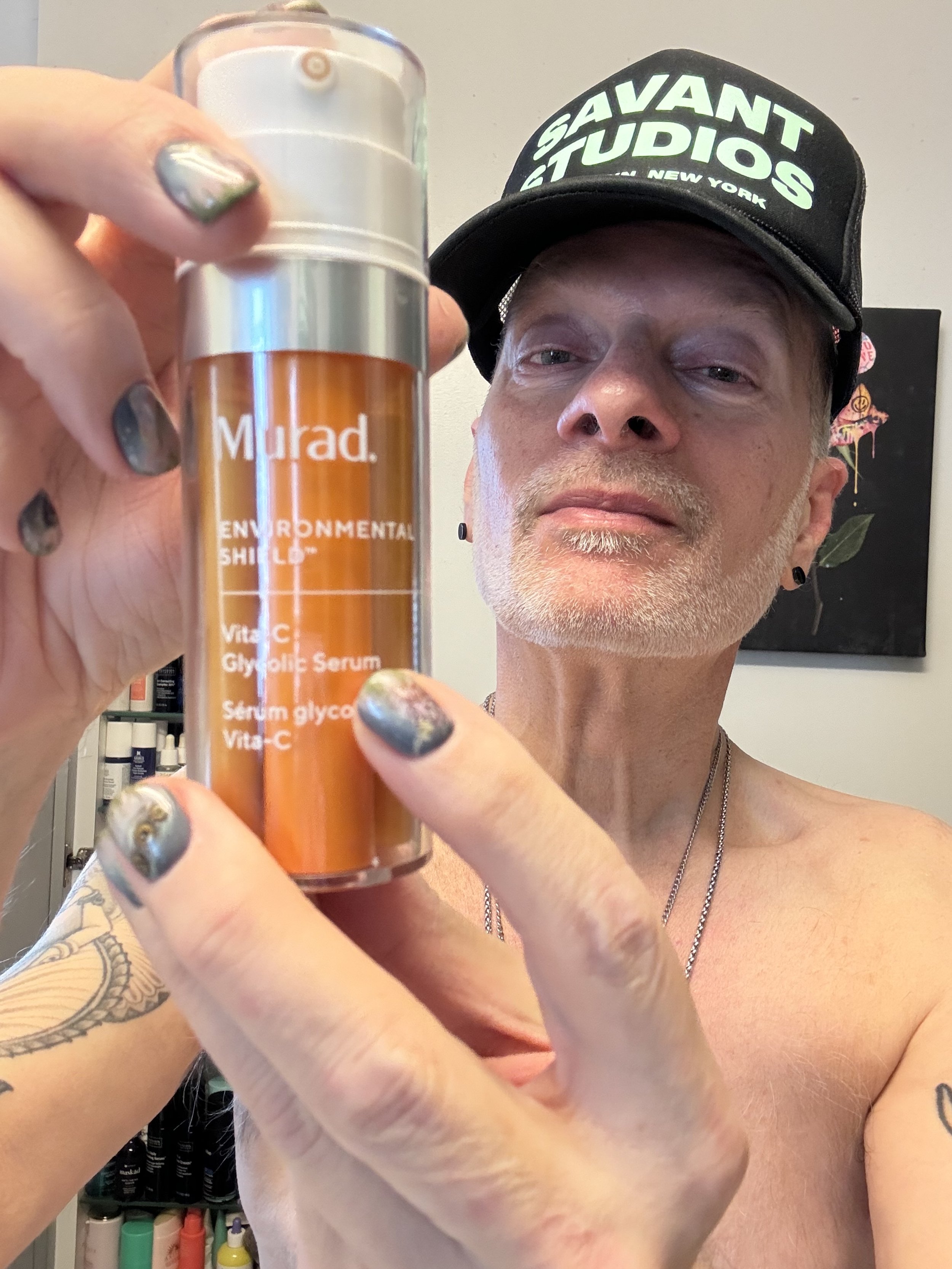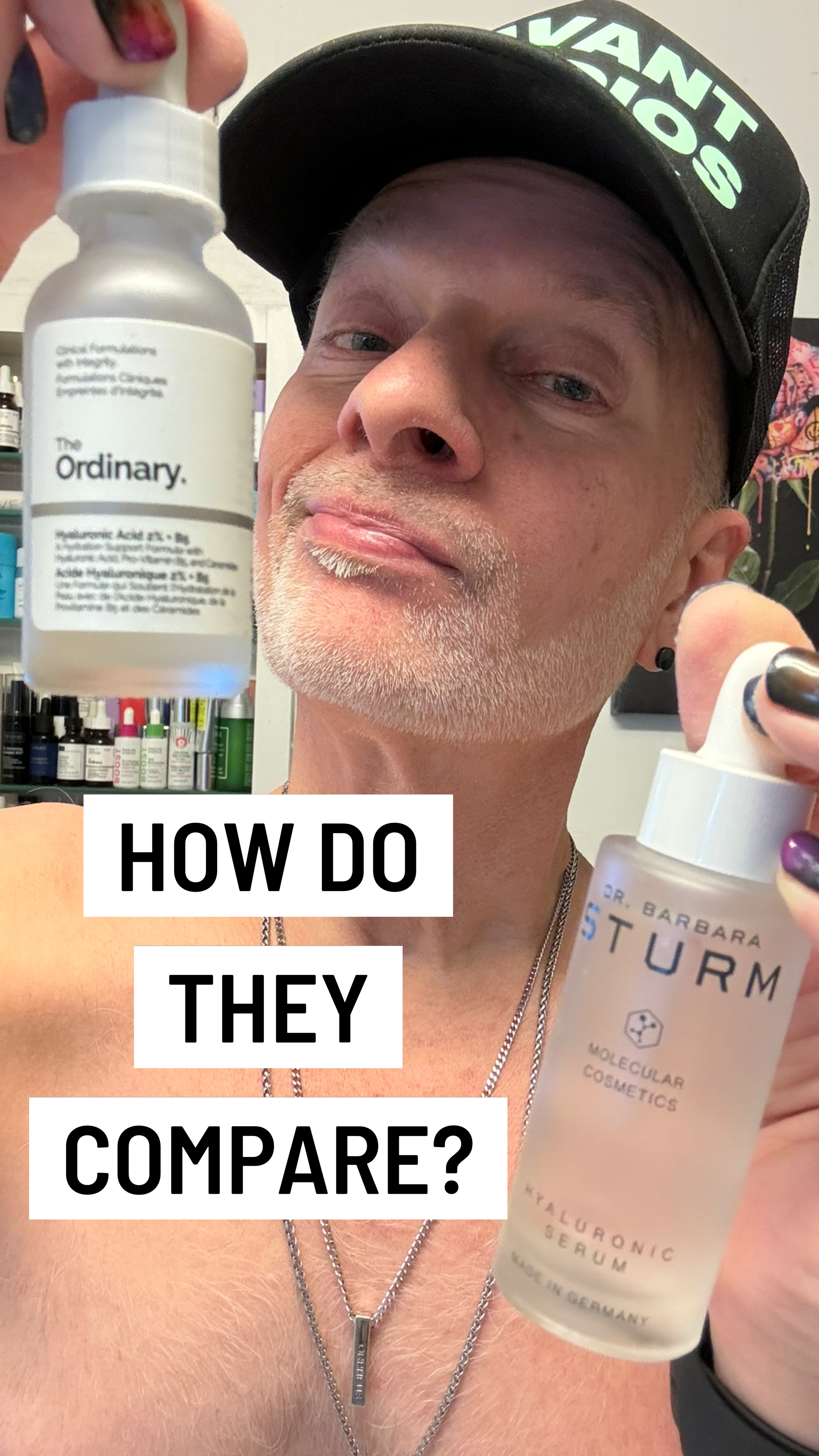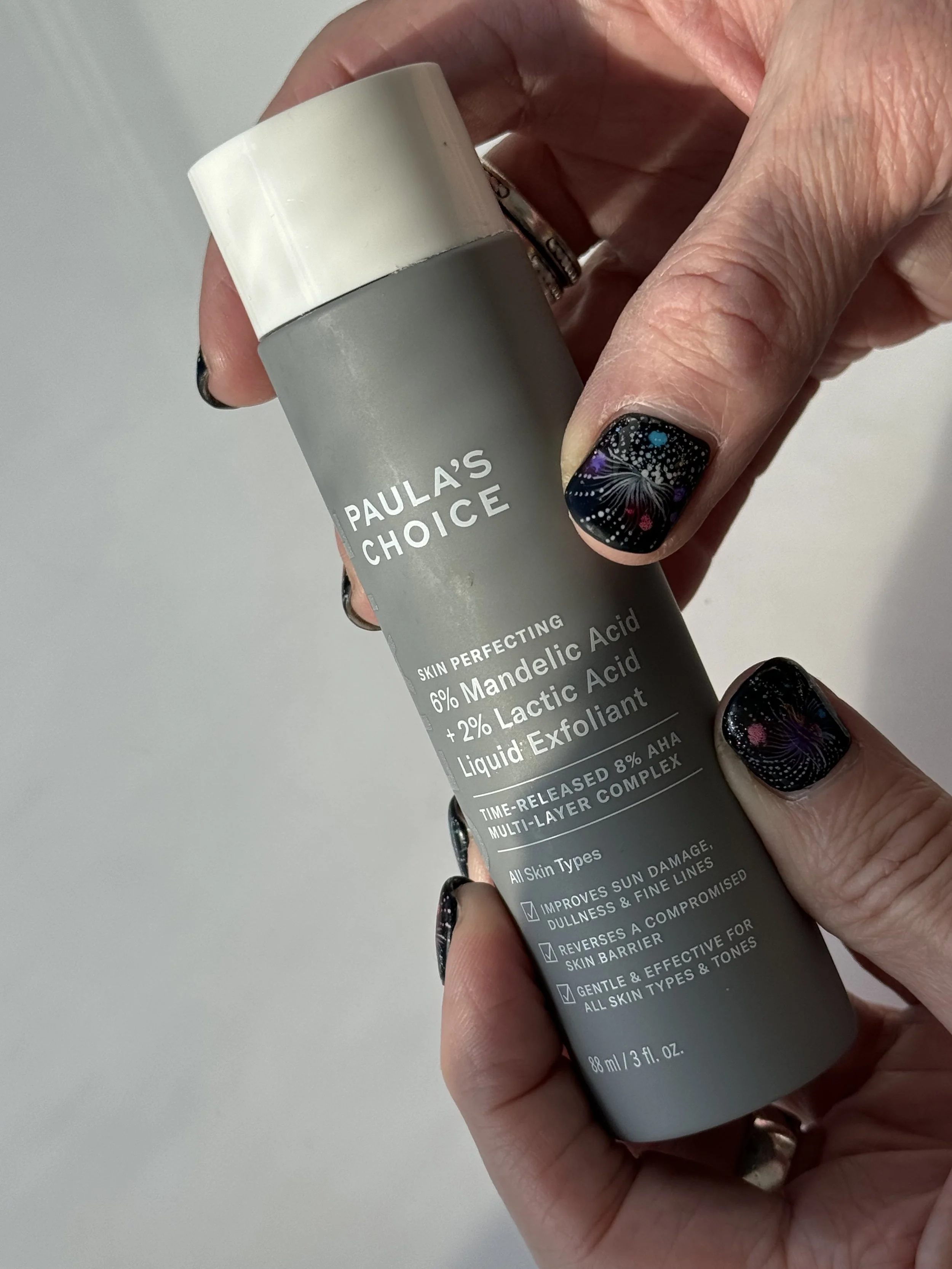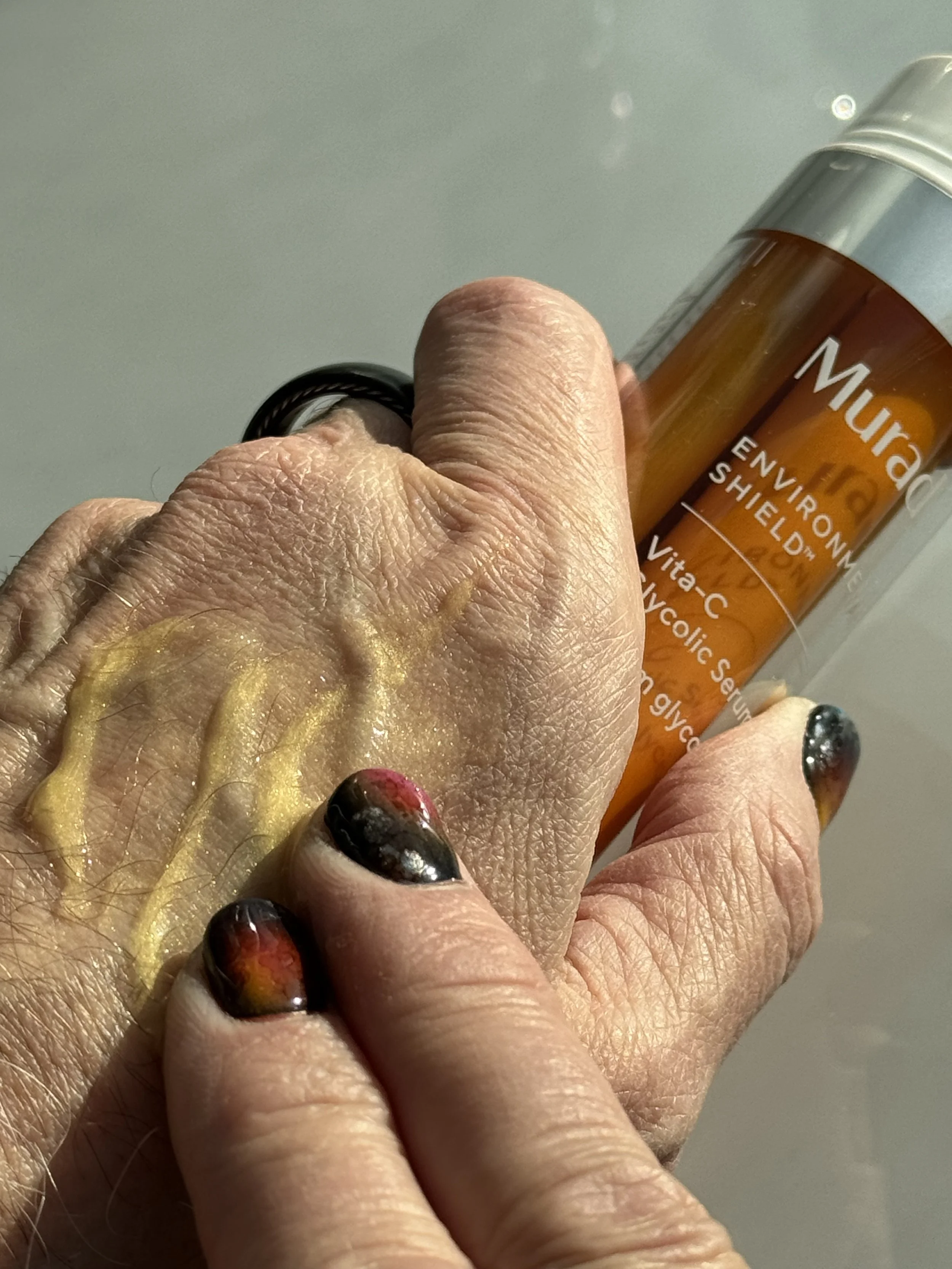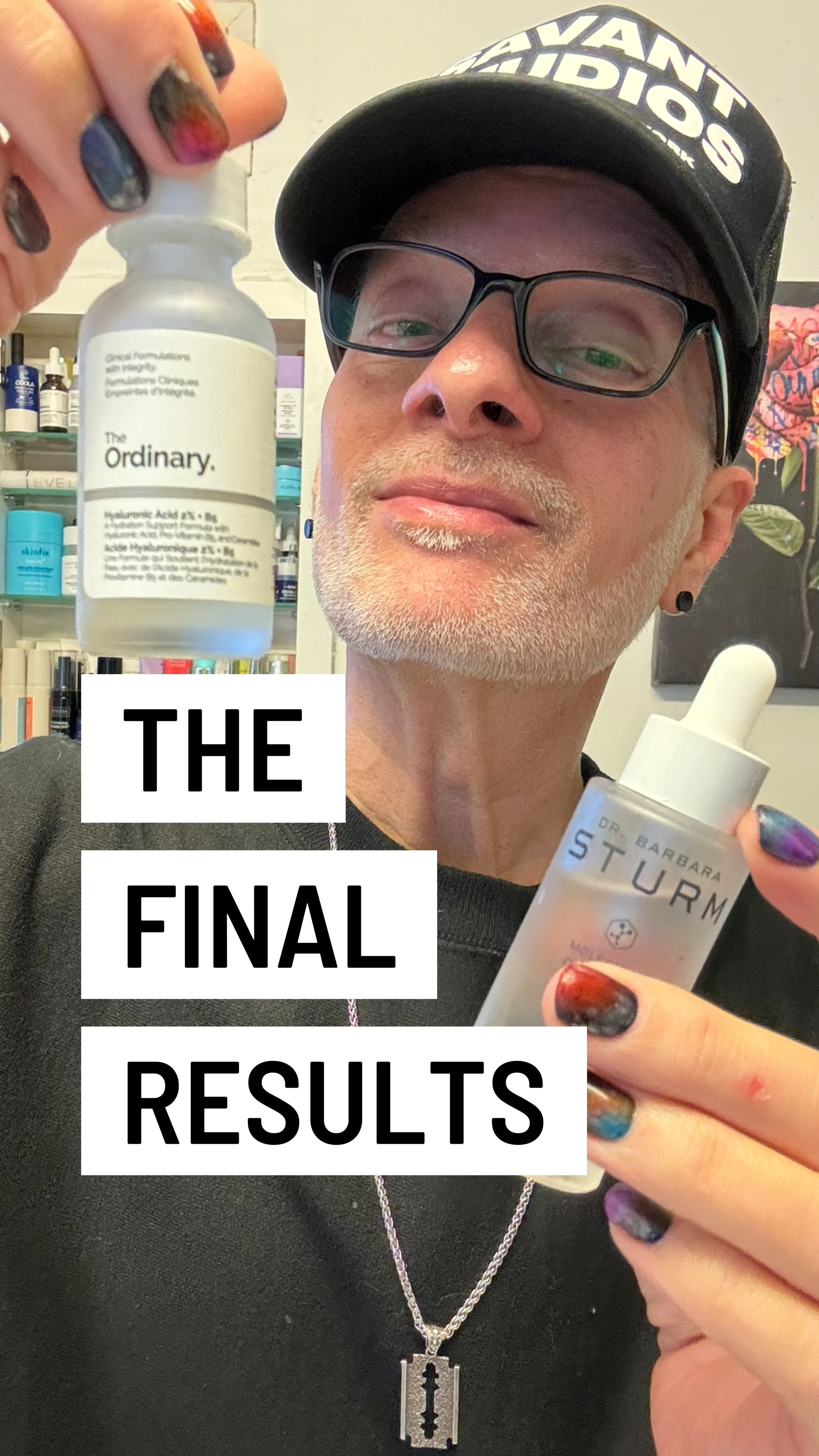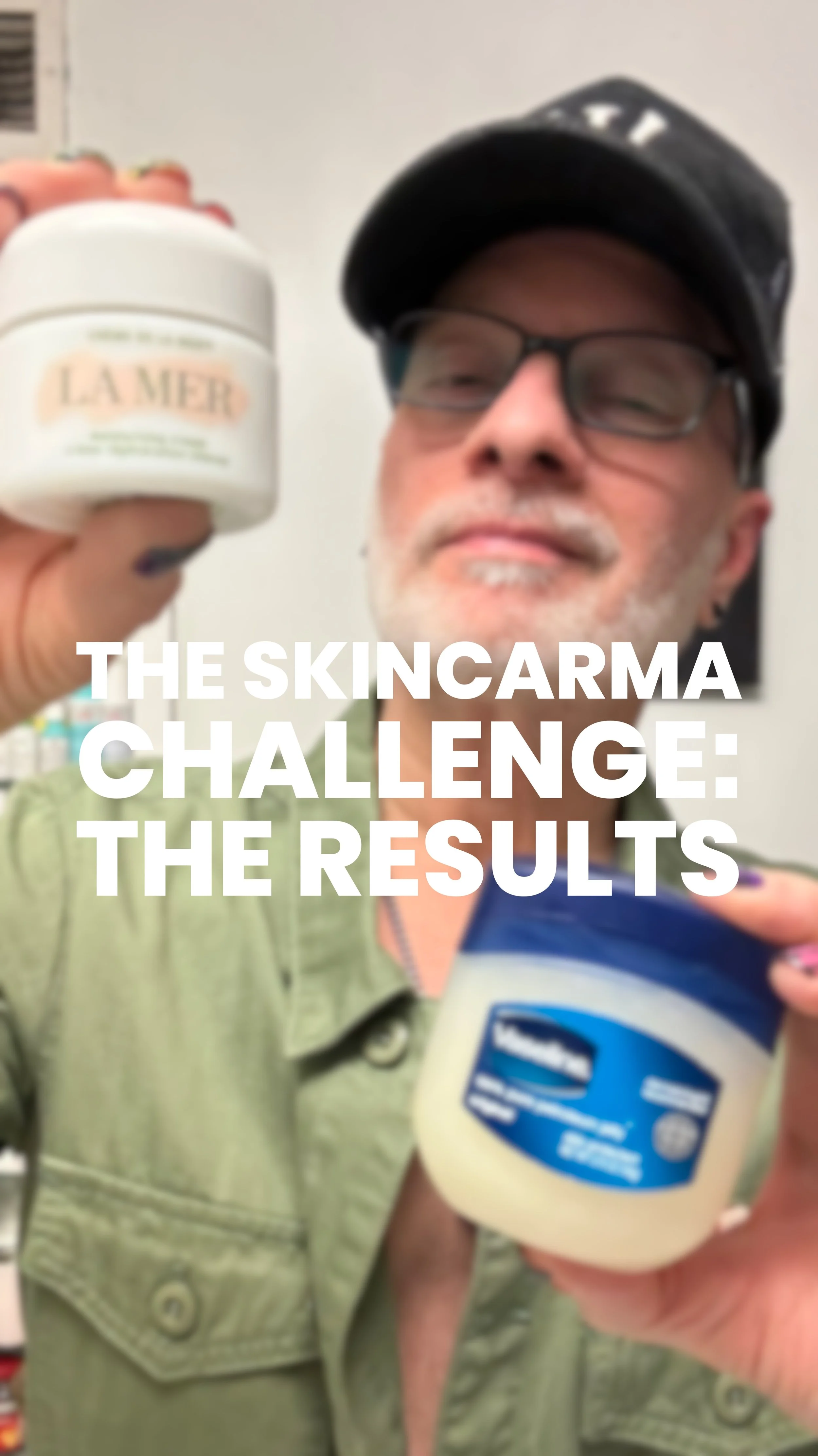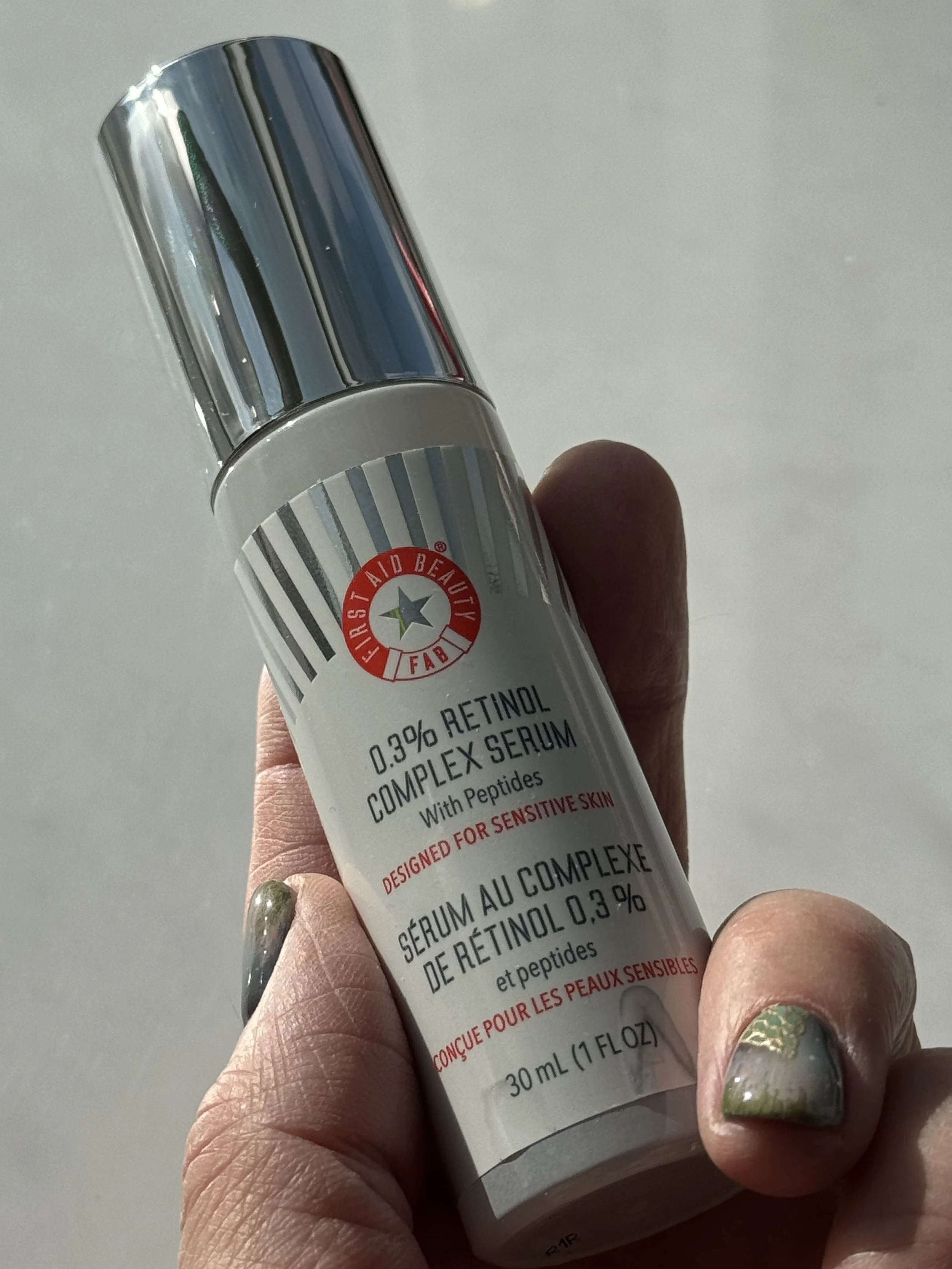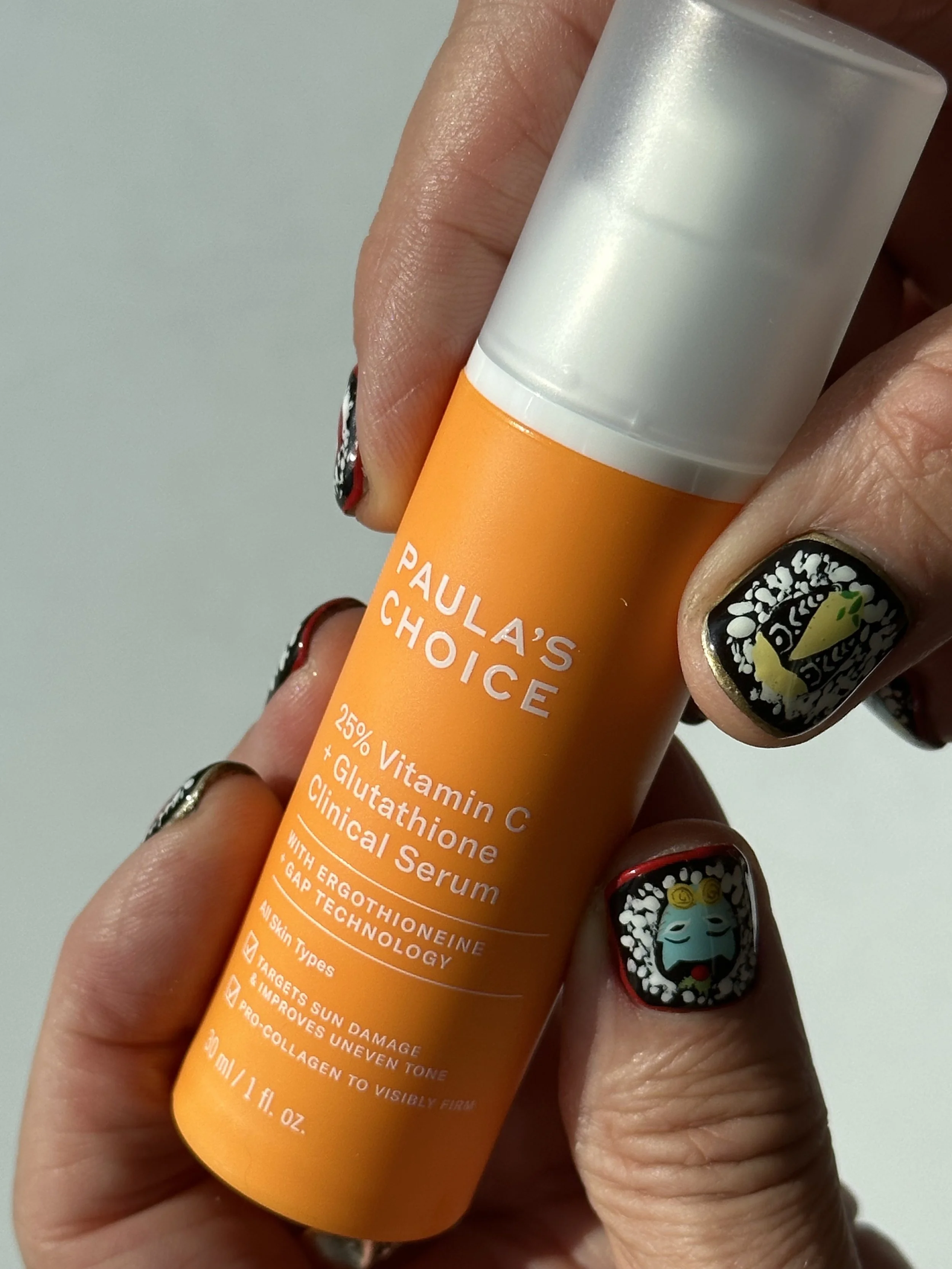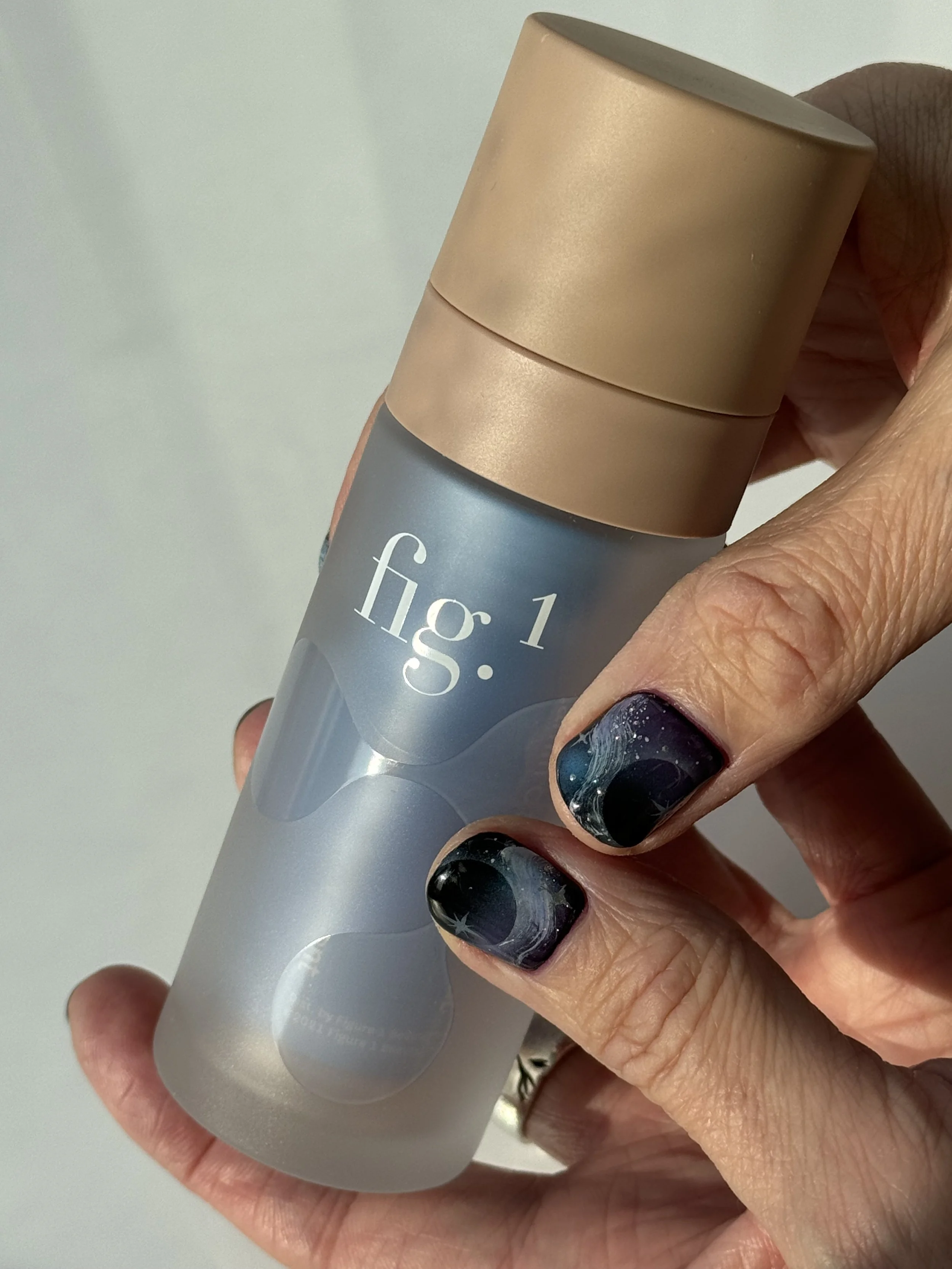PRODUCT REVIEW: MURAD VITA-C GLYCOLIC BRIGHTENING SERUM - Can you use vitamin c and glycolic acid together? Is glycolic acid too strong for sensitive skin?
MURAD VITA-C GLYCOLIC BRIGHTENING SERUM
Do you use potent actives like Glycolic Acid, Ascorbic Acid and Salicylic Acid in your skincare routine? Or are you one of those people who wash their face with water and get on with their day?
I’ve never been a member of the “I just splash water on my face” club. Skincare brings me too much joy to wet my face and head to bed.
It took me a long time to figure things out. Like how often to use a Retinol face serum or a Glycolic Acid toner. Even peptides and Vitamin C can seem confusing.
But all of these ingredients have a purpose when it comes to your skin health and a healthy functioning skin barrier. And while it may be nice to be that person who just splashes water on their face, the rest of us need more to attain and maintain optimal skin health. Especially as we age.
So I love my skincare products and appreciate the benefits of smart, well-formulated skincare. And one new product has really caught my eye recently – the Murad Vita-C Glycolic Brightening Serum. It’s got an unusual combo of Glycolic Acid and Vitamin C, both potent skin brighteners and stimulants of healthy skin functions. My detailed review is just below!
THE BEST VITAMIN C SERUMS
Blending powerful actives isn’t new. Complex chemistry in skincare has been going on forever. It’s just that brands like The Ordinary have pushed the concept of simplification and bare-bones products in order to make good skincare more accessible to more people. For some, it’s been a huge positive. Not everyone can afford a complicated, expensive anti-aging serum!
But neither complex skincare products with multiple actives or “skinny skincare” like the one-note face serums offered by The Ordinary are surefire solutions for your skin health if you don’t know what you’re doing.
How do you optimize your skin health and achieve a healthy functioning skin barrier? You have to know what ingredients do, how often your skin needs them, and at what concentrations. Actives like Vitamin C, Niacinamide, peptides, retinoids, and acids like Salicylic and Glycolic are all essential for attaining and maintaining healthy skin.
Drinking lots of water helps too. I’m just not sure about splashing it on your face and going straight to bed…
THE SKINCARMA CHALLENGE: HOW DO TWO POPULAR HA SERUMS COMPARE?
Before I get into my detailed Murad Vita-C Glycolic Brightening Serum product review just below, I wanted to explore some of the most frequently asked questions about Glycolic Acid, Vitamin C, and the technologies behind Murad’s innovative new serum…
1. Can you use vitamin c and glycolic acid together?
Essentially, you can use Vitamin C and Glycolic Acid together – either in the same product or through dedicated serums in the same routine.
However, it’s not as simple as that. Both actives, particularly at high concentrations, have the ability to sensitize the skin and cause irritation and redness. Certainly if your skin is already sensitive to potent actives, it’s best to proceed with caution.
Vitamin C is a potent antioxidant and thus best utilized in your morning routine to help protect your skin from environmental damage throughout the day.
Glycolic Acid tends to be sensitizing for most skin types, especially at its most potent in concentrations of 10% or higher and at lower pH levels (between 3 and 4.5). Because of its tendency to sensitize the skin, it is recommended to avoid sun exposure in the immediate hours after use. This means it’s best to use a Glycolic Acid serum or treatment at night to give your skin time to recover.
Explore my picks of the best Vitamin C serums on the blog here.
Sources: SkinPharm: How to Use Glycolic Acid + Vitamin C Together; Murad: In the mix: How to use glycolic acid and vitamin C together
2. Is glycolic acid too strong for sensitive skin?
In general, Glycolic Acid can be used by all skin types, including sensitive skin. Whether it’s too strong for your skin is a matter of trial and error. It depends on the concentration of the exfoliating acid in the product you’re using, the pH level of the formula itself, the frequency of use – and just how sensitive your skin is to potent actives.
In an article titled Glycolic Acid for Skin by the experts on the Paula’s Choice research team, Glycolic Acid is described as “one of the most powerful AHAs due to its small molecule size, which allows glycolic acid to slip past skin’s surface and penetrate a bit further.
“Although this penetration makes glycolic acid more beneficial, it also increases the chances of sensitivity. If you’re looking to reap the benefits of glycolic acid and are nervous about sensitivity, experiment with usage cadence and make sure to use sunscreen during the day and a nourishing moisturizer at night.”
Again, you won’t know if you don’t try.
Explore my picks of the best Vitamin C serums on the blog here.
Sources: Vogue: How To Incorporate Glycolic Acid Into Your Skincare Regime, According To The Experts; WebMD: Glycolic Acid - Uses, Side Effects, and More; Paula’s Choice: Glycolic Acid for Skin
3. Is glycolic acid better than a vitamin C serum?
In general, the two are not mutually exclusive and can be used to treat multiple skin concerns and optimize skin health when used consistently over time.
Both Glycolic Acid and Vitamin C are superb skin brighteners. But, as a “direct acid” with powerful exfoliating properties, Glycolic Acid can instantly brighten the complexion, while Vitamin C brightens skin over time.
Glycolic Acid and Vitamin C each have the ability to minimize hyperpigmentation and the visible appearance of dark spots. By doing so, skin tone is more unified.
As a potent exfoliant, Glycolic Acid is highly effective at resurfacing skin to smooth out texture and surface roughness.
And, of course, Vitamin C is one of the most powerful antioxidants that helps to prevent the effects of photoaging, including surface lines and wrinkles, dark spots, and collagen damage.
There’s an excellent article on the extensive pro-skin health benefits of combining the two actives titled, Why You Should Use Glycolic Acid and Vitamin C Together which you can read here.
Explore my picks of the best Vitamin C serums on the blog here.
Sources: MDGlam: Why You Should Use Glycolic Acid and Vitamin C Together; New York Magazine: The 11 Very Best Vitamin-C Serums
4. Is it OK to use glycolic acid everyday?
It is not recommended – or even necessary – to use high concentrations of Glycolic Acid every day. In fact, the risk of sensitizing skin is very high with over-exfoliation. Your skin simply doesn’t need that level of exfoliating.
While Glycolic Acid toners are popular products for instantly brightening skin and smoothing skin texture, they are more often than not too strong for daily use. And over-doing it with high concentrations of Glycolic Acid can cause photosensitivity, which can accelerate hyperpigmentation and intensify the appearance of dark spots.
That said, at lower concentrations of perhaps 2-3% in a brightening serum or gentle AHA toner, it’s okay to use Glycolic Acid daily. Everyone’s skin is unique and you will only know if you try.
Explore my picks of the best Vitamin C serums on the blog here.
Sources: Medicine Net: Is It OK to Use Glycolic Acid Every Day?; Byrdie: Derms Say Glycolic Acid Is the Ultimate Anti-Aging Exfoliator—Here's Why
5. Product Review
Murad Vita-C Glycolic Brightening Serum Review
I’m always looking for well-formulated products that optimize my skin health – and the skin health of others.
There are a few active ingredients that I consider essential for heathy skin. Among them are both Vitamin C and Niacinamide, or Vitamin B3, two powerful antioxidants that help to prevent and repair photodamage. In fact, I use both a Vitamin C serum and a Niacinamide serum in my daily skincare routines.
For daily pore maintenance, I usually reach for my beloved Paula’s Choice 10% Niacinamide Booster and the brand’s 2% BHA Liquid Exfoliant.
Once or twice a week, I use an exfoliating face serum or toner with alpha hydroxy acids to slough away dead surface skin cells and instantly brighten my complexion. The new Paula’s Choice 6% Mandelic Acid + 2% Lactic Acid Liquid Exfoliant and Youth To The People’s
Kombucha + 10% AHA Power Exfoliant are personal faves.
PRODUCT REVIEW: PAULA'S CHOICE SKIN PERFECTING 6% MANDELIC ACID + 2% LACTIC ACID LIQUID EXFOLIANT
So I was super intrigued by the new Murad Vita-C Glycolic Brightening Serum – which blends both Glycolic Acid and Ascorbic Acid, the pure form of Vitamin C.
At first, the concept of combining Vitamin C and Glycolic Acid in a single treatment really concerned me. I’m super cautious about over-exfoliating and firmly believe that too many people misuse and overuse Glycolic Acid. Your skin does a great job of exfoliating dead skin cells on its own – a process called desquamation. It doesn’t really need a boost.
And I’ve had my share of Glycolic scares. Notably, I’ve nearly burned my face off with The Ordinary’s AHA 30% + BHA 2% Peeling Solution. I know I’m not alone.
Given the potency of Glycolic Acid, and my own experience using it, it was hard to get my mind around the idea of combining it with the most potent form of Vitamin C, Ascorbic Acid.
But I can honestly say that both my skin and I survived the combination that Murad achieved with its Vita-C Glycolic Brightening Serum. Not only did my skin tolerate it, but I actually like the results I’ve gotten over the past three weeks: a clear, fresh and bright complexion.
Of course, the concentrations of each active matter. While Murad doesn’t state the levels of Glycolic and Ascorbic Acids in its brightening serum, the formula analysis site What’s in My Jar estimates the concentrations to be: Glycolic Acid 3% - 3.7% and Ascorbic Acid 0.55% - 0.85%. Both actives are at the low end – low enough for daily use and steady results.
I actually think the Murad Vita-C Glycolic Brightening Serum is quite a smart formulation. It has a very light, velvety texture that feels great on your skin and absorbs quickly. I’ve used in place of my regular Vitamin C serum in my morning routine and seen no irritation whatsoever. That includes over consecutive days.
In addition to the two potent brightening actives, Murad included several nourishing amino acids as well as antioxidant botanical extracts and Vitamin E for an added layer of protection.
It’s a fascinating formula with the power to deliver a superb brightening benefit, reduction in the appearance of dark spots, and a fresher, more even complexion. And there’s simply nothing else like it!
6. Pros & Cons
What I like about it: The Murad Vita-C Glycolic Brightening Serum is one of the most interesting and innovative brightening serums I’ve seen in the past year. Despite the inherent scary factor of combining Glycolic Acid with Ascorbic Acid, it’s not at all irritating – even when used on consecutive days. In fact, the brand recommends twice daily use!
What I don’t like about it: At $88, it’s on the pricey side, though there are plenty of less effective brightening serums at twice that amount.
Who it’s for: All skin types, even sensitive skin.
SHOP THE BLOG: Want to try it for yourself? Purchase the Murad Vita-C Glycolic Brightening Serum for $88 here.
FIND OUT WHICH SERUM PERFORMED BETTER – AND BY HOW MUCH!
The Ingredient List of the Murad Vita-C Glycolic Brightening Serum:
 aox|sb|buff, Urea
aox|sb|buff, Urea  sii|h, Yeast Amino Acids h, Trehalose
sii|h, Yeast Amino Acids h, Trehalose  h, Inositol h, Taurine buff, Betaine
h, Inositol h, Taurine buff, Betaine  h, Glutathione, Tetrahexyldecyl Ascorbate
h, Glutathione, Tetrahexyldecyl Ascorbate  aox|sb, Cetearyl Isononanoate emo, Hydroxyethyl Acrylate/Sodium Acryloyldimethyl Taurate Copolymer vc, Oleyl Alcohol emo|perf|solv|vc 2 4, Silica vc, Hexylresorcinol
aox|sb, Cetearyl Isononanoate emo, Hydroxyethyl Acrylate/Sodium Acryloyldimethyl Taurate Copolymer vc, Oleyl Alcohol emo|perf|solv|vc 2 4, Silica vc, Hexylresorcinol  sb|amic, Polysilicone-11, Triheptanoin emo, Polyisobutene vc, Marrubium Vulgare Meristem Cell Culture, Zanthoxylum Bungeanum Fruit Extract, Hydrolyzed Verbascum Thapsus Flower aox, Butylene Glycol h|solv 0 1, Mica col, Hexylene Glycol solv|emu|perf|surf 0-1 0-2, Sodium Surfactin surf|emu|vc, Xymenynic Acid emo, Tocopheryl Acetate aox 0 0, PEG-7 Trimethylolpropane Coconut Ether emu|surf, Terminalia Ferdinandiana Fruit Extract aox|sb, Sorbitol h 0 0, Tin Oxide col|abrasive/scrub|vc, Xanthan Gum vc, T-Butyl Alcohol perf|solv, Chlorella Vulgaris Extract, Decyl Glucoside surf, Gold col, Citric Acid buff, Caprylyl Glycol h|emo, Phenoxyethanol pres, Ethylhexylglycerin pres, Sodium Benzoate pres, Potassium Sorbate pres, Titanium Dioxide (Ci 77891) col 0 0
sb|amic, Polysilicone-11, Triheptanoin emo, Polyisobutene vc, Marrubium Vulgare Meristem Cell Culture, Zanthoxylum Bungeanum Fruit Extract, Hydrolyzed Verbascum Thapsus Flower aox, Butylene Glycol h|solv 0 1, Mica col, Hexylene Glycol solv|emu|perf|surf 0-1 0-2, Sodium Surfactin surf|emu|vc, Xymenynic Acid emo, Tocopheryl Acetate aox 0 0, PEG-7 Trimethylolpropane Coconut Ether emu|surf, Terminalia Ferdinandiana Fruit Extract aox|sb, Sorbitol h 0 0, Tin Oxide col|abrasive/scrub|vc, Xanthan Gum vc, T-Butyl Alcohol perf|solv, Chlorella Vulgaris Extract, Decyl Glucoside surf, Gold col, Citric Acid buff, Caprylyl Glycol h|emo, Phenoxyethanol pres, Ethylhexylglycerin pres, Sodium Benzoate pres, Potassium Sorbate pres, Titanium Dioxide (Ci 77891) col 0 0IS IT REALLY A SCAM?
Find out on my TikTok channel.
WATCH MY VIDEO REVIEW
THE BEST NIACINAMIDE SERUMS FOR CLOGGED PORES AND A BRIGHTER COMPLEXION
ON MY YOUTUBE CHANNEL HERE
WATCH MY VIDEO REVIEW OF
SKINCARE HACKS: GLYCOLIC ACID IS THE NATURAL DEODORANT THAT WORKS!
ON MY YOUTUBE CHANNEL HERE
WATCH MY VIDEO REVIEW OF
MY FAVORITE HUMECTANT SERUMS FROM PAULA'S CHOICE, THE INKEY LIST, GHOST DEMOCRACY AND MORE
ON MY YOUTUBE CHANNEL HERE
WATCH MY VIDEO REVIEW
COOL CLEAN FACIAL SUNSCREENS TO KEEP US SAFE AND SMILING IN THE SUN!
ON MY YOUTUBE CHANNEL HERE
WATCH MY VIDEO REVIEW
THE OPULUS BEAUTY LABS RETINOL SYSTEM – THE COOLEST RETINOL INNOVATION I’VE EVER SEEN
ON MY YOUTUBE CHANNEL HERE
WATCH MY VIDEO REVIEW OF
MY WINTER SKIN SAVIOR: SKINFIX BARRIER+ LIPID REPLENISHING SKINCARE
ON MY YOUTUBE CHANNEL HERE
WATCH MY VIDEO REVIEW
A COMPLETE K-BEAUTY ROUTINE WITH THE BEST FACIAL SKINCARE FROM PURITO, COSRX, MISSHA & MORE!
ON MY YOUTUBE CHANNEL HERE
WATCH MY VIDEO REVIEW
THE YEAR’S BEST VITAMIN C SERUMS WITH PAULA'S CHOICE, SUNDAY RILEY, THE INKEY LIST AND MORE!
ON MY YOUTUBE CHANNEL HERE
WATCH MY VIDEO REVIEW OF
A SELFCARE SUNDAY NOT FOR THE FAINT OF HEART – WITH THE PAULA’S CHOICE 25% AHA PEEL!
ON MY YOUTUBE CHANNEL HERE



